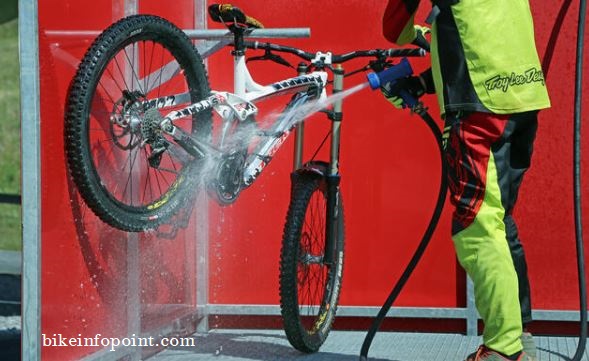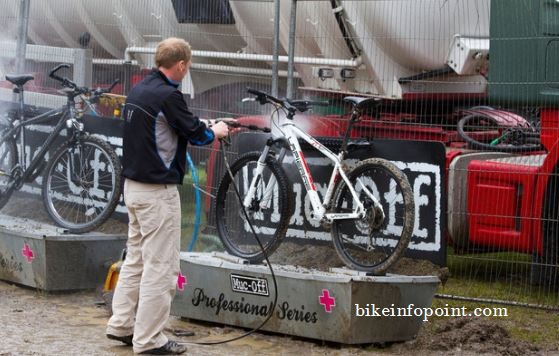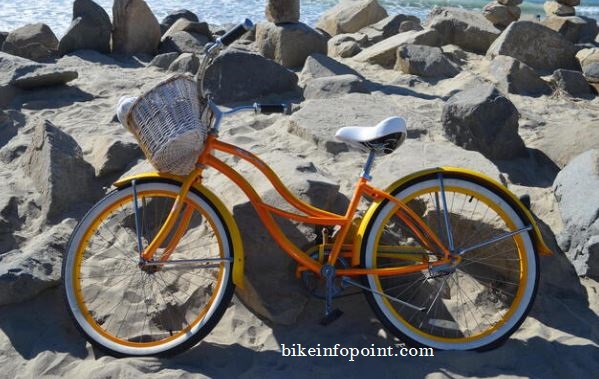
Does Washing Your Bike Damage it
Washing your bike does carry some risk of damaging it, particularly if you’re not careful or don’t have the right materials and tools. We will discuss, after washing how to solve it.
Maintaining a clean bike is important for several reasons. First and foremost, a clean bike will function better and last longer than a dirty one. Dirt, grime, and other contaminants can build up on the bike’s components and cause wear and damage over time. For example, dirt can accumulate in the bearings of the wheels and pedals, causing them to grind and wear out prematurely. Similarly, dirt and grime on the chain can cause it to wear out more quickly and shift poorly.
Cleaning your bike regularly can help prevent these issues and extend the life of your bike. In addition to maintaining its performance, a clean bike also looks better and is more enjoyable to ride. No one wants to ride a dirty, grimy bike, and a clean bike can make all the difference in terms of enjoyment and pride of ownership.
Cleaning your bike can also be a good opportunity to inspect it for any issues or maintenance needs. While you’re cleaning, you can check for loose bolts, worn-out components or other issues that might need attention. This can help you catch problems early and prevent them from becoming bigger issues down the road. Overall, maintaining a clean bike is an important part of responsible bike ownership and is well worth the effort.
Table of Contents
ToggleFactors that can Affect the Risk of Damaging a Bike While Washing it

There are several factors that can affect the risk of damaging a bike while washing it.
The first factor is the materials and construction of the bike. Different bikes are made from different materials, and these materials can have different vulnerabilities when it comes to washing. For example, carbon fiber bikes are very light and strong but they are also more sensitive to damage from water and cleaning chemicals. On the other hand, steel bikes are generally more rugged and resistant to damage, but they can rust if they are not properly dried after washing.
The second factor is the type of cleaning products and tools used. Different cleaning products and tools can have different effects on different materials and components. For example, using a harsh detergent on a bike with sensitive bearings could strip away the lubrication and cause them to wear out more quickly. Similarly, using a stiff-bristled brush on a delicate paint job could scratch or damage the finish. It’s important to choose the right cleaning products and tools for your specific bike and to use them with care.
The third factor is the technique and care taken while washing the bike. Even if you have the right materials and tools, it’s still possible to damage your bike if you’re not careful. For example, applying too much pressure while scrubbing or rinsing could cause damage to the bike’s finish or components. Similarly, not drying the bike thoroughly after washing could lead to rust and other forms of corrosion. It’s important to be gentle and thorough when washing your bike and to pay attention to the specific needs of each part and component.
Tips for Safely Washing a Bike

There are several tips you can follow to safely wash your bike and minimize the risk of damaging it:
Gather the necessary cleaning supplies and tools: Before you begin washing your bike, make sure you have everything you need. This may include a bucket, bike-specific cleaning products, a soft-bristled brush or sponge, a cloth or rag, and a clean, dry towel. It’s also a good idea to have a hose or pressure washer on hand, as well as any specialized tools or cleaning products that may be needed for specific parts of the bike, such as chain lube or degreaser.
Protect sensitive areas of the bike: Some areas of a bike are more sensitive to damage than others. These include bearings, seals, and other mechanical components that can be affected by water and cleaning chemicals. To protect these areas, you can use a product like a bike specific lubricant or a sealant to create a barrier against water and dirt. You can also use a cloth or rag to cover these areas before washing or simply avoid spraying them directly with water or cleaning products.
Use a gentle touch when scrubbing and rinsing: When scrubbing and rinsing your bike, it’s important to use a gentle touch. Applying too much pressure or scrubbing too aggressively can cause damage to the bike’s finish or components. Instead, use a soft-bristled brush or sponge and apply a moderate amount of pressure. If you’re using a pressure washer, be careful not to hold it too close to the bike or use too much pressure, as this can also cause damage.
Dry the bike thoroughly: After washing your bike, it’s important to dry it thoroughly to prevent rust and other forms of damage. Use a clean, dry towel to pat the bike down, paying special attention to areas that are prone to rust, such as the chain, derailleurs, and other metal components. If you have a compressor, you can also use it to blow away any remaining water or moisture. Once the bike is dry, you can apply any additional lubrication or protection as needed.
How to Dry Bike after Washing – Detail Explained
By following these tips, you can help ensure your bike stays clean and in good condition while minimizing the risk of damaging it.
Alternative Methods of Cleaning a Bike
There are several alternative methods for cleaning a bike that can be used in place of a traditional wash:
Using a bike cleaning machine or service: Some bike shops and other facilities offer a bike cleaning service that uses specialized machines to wash and dry bikes. These machines typically use high-pressure jets of water and detergent to blast away dirt and grime and then use hot air to dry the bike. This can be a convenient option if you don’t have the time or resources to wash your bike yourself, but it can be more expensive than doing it yourself.
Using a hose and minimal cleaning products: If you don’t have access to a pressure washer or bike cleaning machine, you can still give your bike a thorough cleaning using just a hose and a minimal amount of cleaning products. Simply rinse the bike off with a hose, paying special attention to areas that tend to accumulate dirt and grime, such as the chain, derailleurs, and wheels. Then, use a small amount of bike-specific detergent and a soft-bristled brush or sponge to scrub away any remaining dirt. Finally, rinse the bike off again and dry it thoroughly with a towel.
Regular cleaning is an important part of responsible bike ownership, as it helps maintain the appearance and function of the bike. A clean bike not only looks better and is more enjoyable to ride, but it also performs better and lasts longer.
Ultimately, the effort involved in washing your bike is worth it in terms of the benefits it provides. Whether you prefer to do it yourself or use a bike cleaning service, taking care of your bike is an important part of enjoying it and getting the most out of it. So don’t be afraid to get your hands dirty and give your bike the cleaning it deserves!


